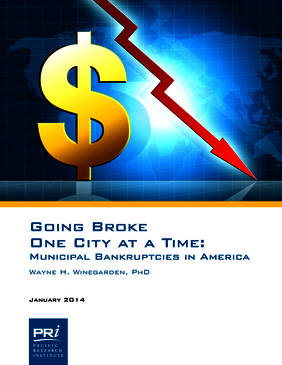
Municipalities have rarely defaulted on their debt. As a consequence, municipal debt is regarded as having an extremely low risk for investors. There are disconcerting trends developing that may change this historical view. The combination of the weak U.S. economy, high municipal debt levels, and large under-funded pension liabilities coupled with unfunded retiree health benefits raises the likelihood that more municipalities will become insolvent going forward.
Declaring bankruptcy (officially Chapter 9 bankruptcy) is an option available to a financially troubled municipalitymore precisely to state leaders who must consent to a municipalitys bankruptcy filingif they meet the eligibility conditions. A municipality can only declare bankruptcy if it is insolvent and only after the municipality has conducted good faith negotiations with its creditors to resolve its financial obligations.
To provide greater perspective on this subject, this study overviews the purpose of Chapter 9 bankruptcy and then reviews the bankruptcy (or near-bankruptcy) of several prominent cases including:
Vallejo, California;
Detroit, Michigan;
Stockton, California;
San Bernardino, California;
San Jose, California;
Jefferson County, Alabama;
Harrisburg, Pennsylvania;
Scranton, Pennsylvania; and,
New York City, New York.
There are important similarities across these high-profile municipal bankruptcies and near bankruptcies that provide valuable lessons regarding how financial insolvency arises and the value and limits of bankruptcy protection.


